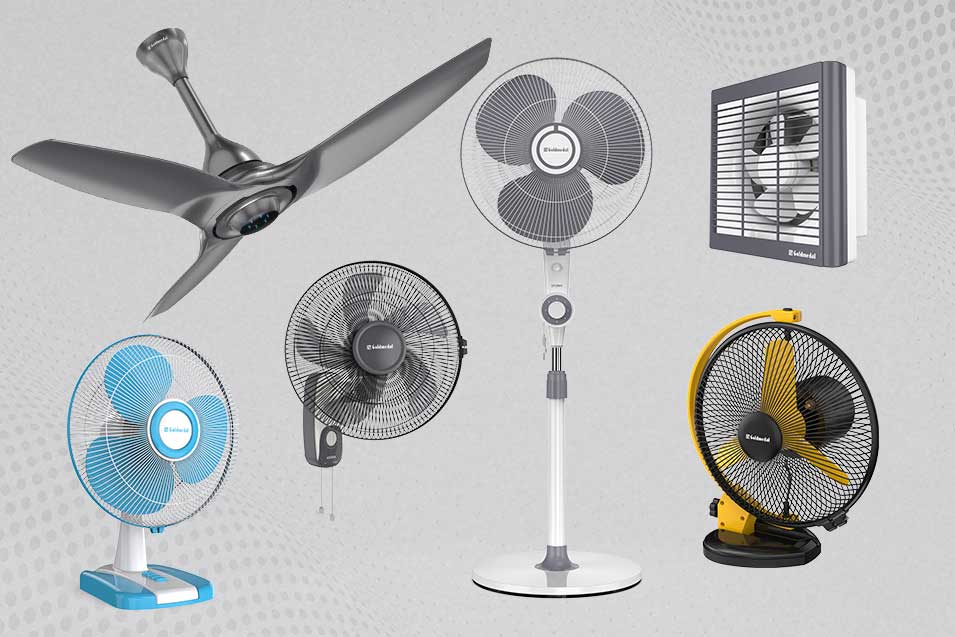
Top 5 Things to Consider Before Selecting a Fan
When it comes to maintaining a comfortable and healthy living environment in your home, proper ventilation is key. Ventilation fans play a crucial role in removing excess humidity, odours, and airborne pollutants, making them an essential component of your home’s overall wellness. However, with the plethora of options available on the market, choosing the perfect ventilation fan from different types of fans can be a daunting task. This guide aims to simplify this process, ensuring you make an informed decision that caters to your specific needs.
Understanding Your Needs
The first step in choosing the right ventilation fan is understanding your needs. Different areas of the home, such as bathrooms, kitchens, and laundry rooms, require different ventilation solutions due to the varying levels of humidity and odours they produce. For instance, bathrooms often require powerful fans to combat high humidity levels, while kitchens may need fans that can handle both moisture and smoke.
Key Factors to Consider
- Size and Capacity: The size of the fan you need depends on the size of the room you wish to ventilate. A simple rule of thumb is to ensure that the fan can provide at least 1 CFM (Cubic Feet per Minute) of air movement for every square foot of room area. For bathrooms, aim for a minimum of 50 CFM, and for larger spaces, adjust accordingly
- Noise Level: The sound level of a ventilation fan is measured in sones. Fans rated at 1 sone or less are considered very quiet, making them ideal for spaces where noise is a concern, such as bedrooms or study rooms.
- Features and Extras: Modern ventilation fans come with a variety of features such as built-in lights. These extras can enhance convenience and effectiveness but also impact the price.
- Installation: Consider the ease of installation. Some fans are designed for quick and easy DIY installation, while others may require professional assistance, especially if ductwork adjustments are needed.
Making the Right Choice
Once you’ve considered your needs and the key factors, it’s time to compare different models and brands. Read reviews and seek recommendations to find a fan that matches your specific requirements and budget. Remember, investing in a high-quality ventilation fan not only improves air quality but also protects your home’s structure from mold and fungus damage caused by excess moisture.
Conclusion
Choosing the perfect ventilation fan for your home doesn’t have to be complicated. By understanding your specific needs, considering key factors such as size, noise level, energy efficiency, and additional features, and doing thorough research, you can find a fan that will effectively maintain a healthy and comfortable environment in your home. Remember, the right ventilation fan not only contributes to your home’s comfort and air quality but also to its overall value. So, take your time, make an informed decision, and enjoy the benefits of improved indoor air quality for years to come.
Frequently Asked Questions (FAQs) :
Q1. What determines a good fan?
A good fan is determined by several factors: efficiency, airflow, noise level, durability, and ease of use. It should offer sufficient airflow (measured in CFM – Cubic Feet per Minute) for the intended space, operate quietly, be energy-efficient, have reliable construction, and be user-friendly with features like multiple speed settings and remote-control operation.
Q2. How do you judge a good fan?
To judge a good fan, consider its CFM rating for airflow efficiency, noise level in decibels to ensure it’s not too loud, energy consumption for efficiency, build quality for durability, and additional features such as speed settings, oscillation, and remote controls for convenience and flexibility.
Q3. Which type of fan is best for home?
The best type of fan for a home depends on the specific needs of the space. Ceiling fans are great for general room cooling and can be decorative. Tower fans offer space-saving design and often come with features like ionizers and remote controls. Pedestal fans are ideal for powerful airflow in large spaces, and table fans are perfect for personal cooling or small areas.
Q4. How do you know if a fan is powerful?
The power of a fan is often indicated by its CFM rating, which measures the volume of air moved per minute. A higher CFM rating means a more powerful fan that can circulate more air, making it more effective at cooling a room. Additionally, the motor’s power (usually measured in watts) can also give an indication of its strength.
Q5. What is CFM in fans?
CFM stands for Cubic Feet per Minute, and it’s a measure of the volume of air a fan can move. This metric is crucial for understanding a fan’s efficiency in circulating air within a particular space. The higher the CFM, the more air the fan can move, making it an important factor in selecting the right fan for your needs.
Q6. Is higher CFM in fans better for cooling?
Yes, a higher CFM in fans generally means better cooling capabilities because the fan can move a larger volume of air across a room, leading to more effective and efficient cooling. However, the ideal CFM also depends on the size of the room; too high a CFM in a small space may be unnecessary and less energy-efficient.

